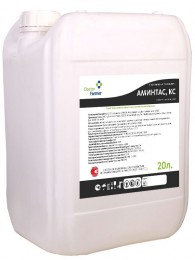
This chemical product is at the registration stage
| Eligible crops: | Cereal crops, Sunflower, Colza, Flax |
| Application: | Protectants |
| Harmful sites: | Complex of seedling pests |
| Active materials: | Thiamethoxam |
| Concentration: | 600 g/l |
| Chemical family: | Neonicotinoids |
| Formulation: | Suspension concentrate, SC |
| Packing: | canister 20 l |
|
|
Culture
|
Harmful object
|
|
|
|
0,3-0,6 |
Winter wheat, winter barley |
Bread ground beetle |
Seed treatment. Working fluid consumption – 10 l/t |
-(1) |
|
Spring and winter wheat, spring and winter barley |
Leaf flea beetles, grain flies, aphids, leafhoppers |
Seed treatment. Working fluid consumption – 10 l/t |
||
|
4,7 – 5,8 |
Rape |
Cruciferous flea beetles |
Treatment of seeds immediately before sowing or in advance (up to 1 year). Working fluid consumption 15-20 l/t |
|
|
4,7 - 5,8 |
Sunflower |
Wireworms gnawing on cutworms |
Seed treatment before sowing. Working fluid consumption 15 l/t. |
|
|
Fiber flax, oil flax |
Fleas |
Seed treatment. Working fluid consumption – 10 l/t |
-(1) |
|
|
Soybeans |
Wireworms, pseudowireworms, soybean stem fly, aphids, flea beetles |
Seed treatment. Working fluid consumption – 10 l/t |
-(1) |
|
|
0,3-0,6 |
Oats |
Leaf flea beetle, cereal flies |
Seed treatment. Working fluid consumption – 10 l/t |
-(1) |
Advantages
Impact speed
We will contact you shortly.